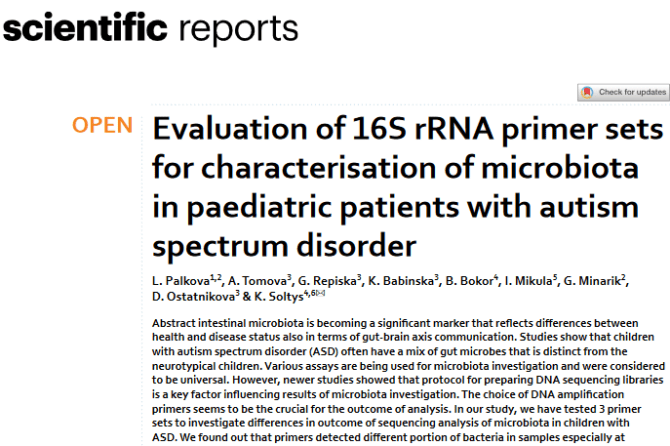
AUTHORS: Palkova, L. , Tomova, A., Repiska, G., Babinska, K., Bokor, B., Mikula, I.,Minarik, G., Ostatnikova, D. and Soltys. K.
ABSTRACT: Intestinal microbiota is becoming a significant marker that reflects differences between health and disease status also in terms of gut-brain axis communication. Studies show that children with autism spectrum disorder (ASD) often have a mix of gut microbes that is distinct from the neurotypical children. Various assays are being used for microbiota investigation and were considered to be universal. However, newer studies showed that protocol for preparing DNA sequencing libraries is a key factor influencing results of microbiota investigation. The choice of DNA amplification primers seems to be the crucial for the outcome of analysis. In our study, we have tested 3 primer sets to investigate differences in outcome of sequencing analysis of microbiota in children with ASD. We found out that primers detected different portion of bacteria in samples especially at phylum level; significantly higher abundance of Bacteroides and lower Firmicutes were detected using 515f/806r compared to 27f/1492r and 27f*/1495f primers. So, the question is whether a gold standard of Firmicutes/Bacteroidetes ratio is a valuable and reliable universal marker, since two primer sets towards 16S rRNA can provide opposite information. Moreover, significantly higher relative abundance of Proteobacteria was detected using 27f/1492r. The beta diversity of sample groups differed remarkably and so the number of observed bacterial genera.
Scientific Reports 11, Article number: 6781 (2021)


